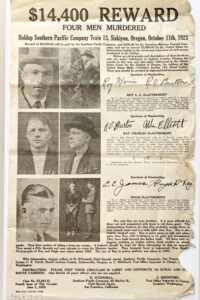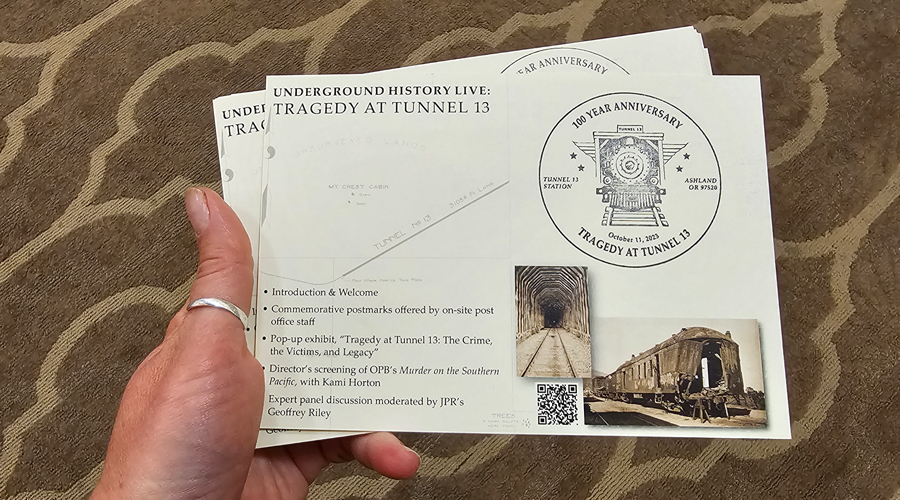The Postal Service recently observed the 100th anniversary of a train robbery that sparked the use of forensics by the Postal Inspection Service.
Dubbed the Tragedy at Tunnel 13, the incident took place on Oct. 11, 1923, when three brothers — Hugh, Ray and Roy DeAutremont — staged one of the last major train robberies in the West.

The trio targeted Southern Pacific Railroad Co. Train 13, which carried mail between Portland, OR, and San Francisco. The train’s mail and freight cars also often transported payrolls, cash, gold, bonds and other valuables.
The brothers mistakenly believed Train 13, called the Oregon-California Express, had $500,000 in gold on board.
They robbed the train outside of Ashland, OR, at Tunnel 13 in the Siskiyou Pass. Postal clerk Elvyn Daugherty and Southern Pacific Railroad employees Sydney Bates, Charles Orin Johnson and Marvin Seng were killed.
Post Office inspectors — law enforcement agents now known as postal inspectors — launched an intense four-year search for the brothers. The inspectors worked with other law enforcement officers from Oregon and California, and investigative teams from Southern Pacific Railroad and the Oregon National Guard.
More than 2 million reward posters of the suspects circulated around the United States, Mexico, Central America and Europe. Those posters are credited with leading to the brothers being found and arrested in 1927.
The investigation and manhunt used forensic science techniques that were quite advanced for the time. As a result, the case helped pave the way for investigative methods that are used today.
“Postal inspectors left no stone unturned as they headed up the largest manhunt in history and brought the killers to justice,” Chief Postal Inspector Gary Barksdale said in a news release. “While theft of mail from trains is not as common today, the safety and security of postal employees remains a top priority for the Postal Inspection Service.”
Today, postal inspectors operate in the United States and abroad to enforce more than 200 federal statutes related to crimes involving the Postal Service and its networks, employees and customers.
As part of the centennial observance, the Ashland, OR, Post Office offered customers a special pictorial postmark Oct. 9-13 with an image designed by Dan Mihalko, a retired postal inspector.
The tragedy had a lasting effect in Southern Oregon and Northern California, where the four victims, their families and co-workers resided. The crime, the search for the perpetrators and their trials received much attention throughout the 1920s.
The details of the event have since been the subject of stories retold in song, on film, in history and comic books, in documentaries and in podcasts.
The history of the victims, the crime and its legacy is also the subject of a Smithsonian National Postal Museum virtual exhibit.



